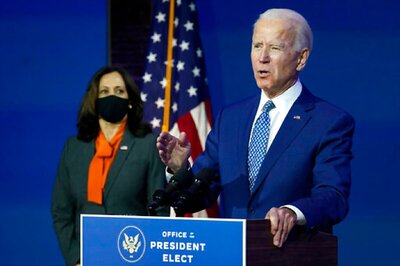
views
New Delhi: For the first time since coronavirus cases were detected in India, the central government has brought out a 'containment plan' for large outbreaks to stop the chain of transmission and reduce morbidity and deaths.
The plan, released on Saturday and which experts termed as a necessary guidance document, details the contours of actions to be taken on the health and administrative front in case there is a large outbreak of coronavirus infections.
India has reported a total of 3,072 cases of COVID-19 so far, but in terms of the trends of the spread the government has noted clusters emerging. Kerala, Maharashtra, Rajasthan, Uttar Pradesh, Delhi, Punjab, Karnataka, Telangana and the Union Territory of Ladakh have witnessed clusters, while the disease has been reported from 211 districts of the country, said the document.
The containment plan details step-by-step measures to be taken for different kinds of transmissions, ranging from travel-related, local, cluster and community spread to widespread community transmission. However, it goes into greater detail and explains the actions to be taken to curb a large outbreak.
According to the document, a large outbreak can be defined as a localised increase in the incidence of coronavirus cases occurring within a defined geographic area. This can happen within a village, town or even a big city. The document characterises it as a progression of a small cluster into bigger, multiple clusters.
When such a large outbreak occurs, a geographic quarantine strategy and cluster containment strategy has to be put into place. As part of these two strategies, movement has to be halted in the affected area and a “barrier has to be erected around the focus of infection”, the document said. Such a geographic containment can extend to even an entire district.
This has to be combined with containment through early detection of cases, breaking the chain of transmission, thereby preventing its spread into new areas, social distancing, contact tracing, quarantine, isolation and, crucially, enhancement of surveillance through proactive testing.
A geographic quarantine also needs to have a well-defined containment zone and buffer zone. The containment zone serves as the prime area where contact tracing, tracking and such surveillance is carried out.
Prior to a large outbreak, the integrated disease surveillance programmes and epidemiological intelligence on increase in the incidence of Covid-19 cases occurring within a geographic area has to serve as an early warning system. This means that when transmission is limited to a local area, the surveillance programme has to gauge if there is the possibility of an increase in the spread based on the estimates of primary and secondary contacts.
Lastly, the restrictions can be scaled down only if no secondary laboratory-confirmed coronavirus case is reported from the geographic quarantine zone for at least four weeks after the last confirmed test has been isolated and all his/her contacts have been followed up for 28 days, the document said.
Experts said such a guidance document is necessary because it puts in place a well-defined strategy.
“Every country should have its own strategy for different stages of transmission, define what we should do in different stages. This is more of a guidance document for both health and administrative measures," said Giridhar R Babu, Professor and Head of Lifecourse Epidemiology at Public Health Foundation of India. "Such a document can also play a part in our strategies ahead if there is a staggered exit from the lockdown.”
In recent days, a containment strategy was seen in both Bhilwara in Rajasthan and Nizamuddin in Delhi where there was a cluster outbreak. In both instances, well-defined geographic areas were sealed for movement and aggressive measures were followed to test, quarantine, isolate and trace the contacts of those who tested positive and who were suspected of being positive.




















Comments
0 comment